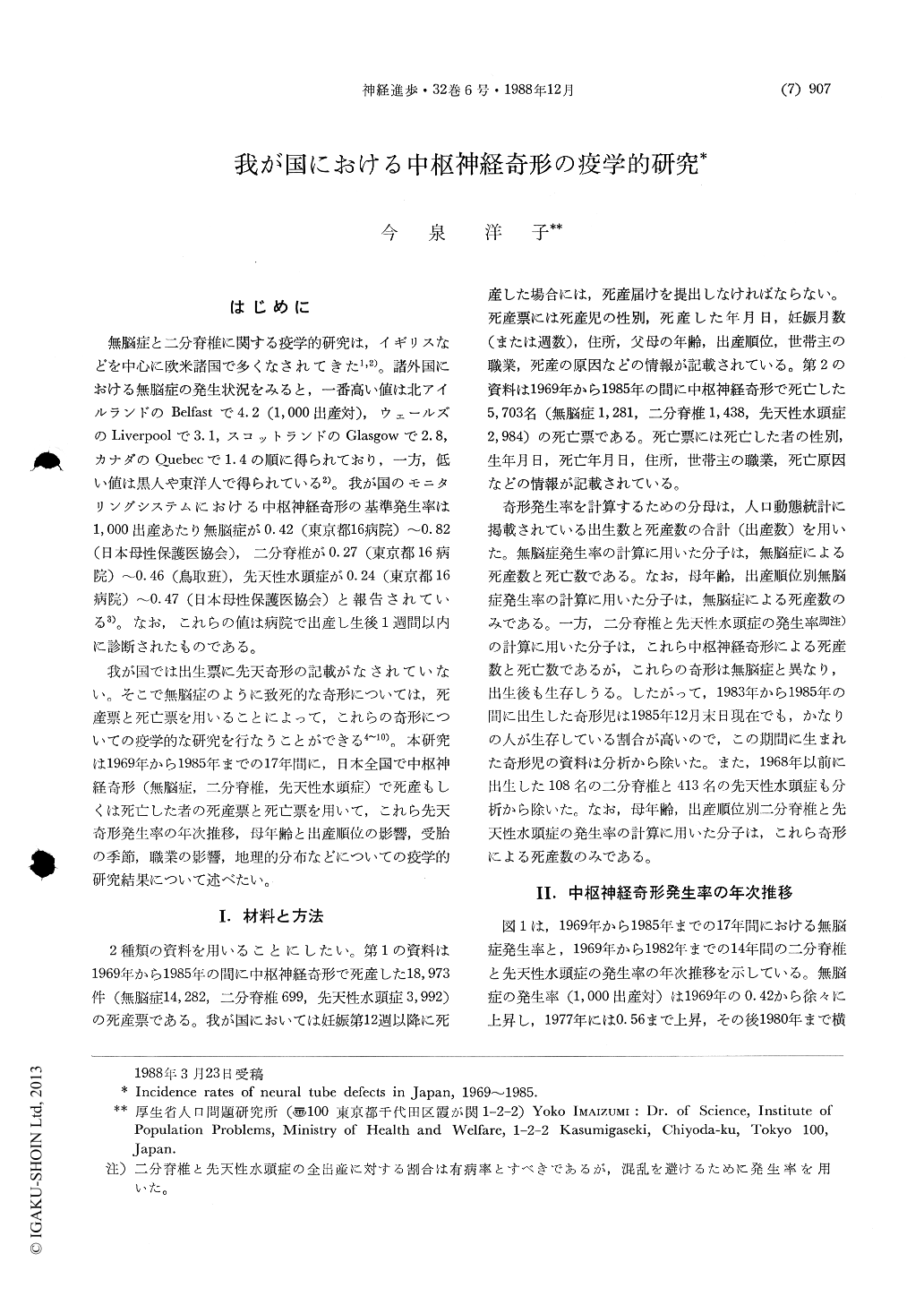Japanese
English
- 有料閲覧
- Abstract 文献概要
- 1ページ目 Look Inside
はじめに
無脳症と二分脊椎に関する疫学的研究は,イギリスなどを中心に欧米諸国で多くなされてきた1,2)。諸外国における無脳症の発生状況をみると,一番高い値は北アイルランドのBelfastで4.2(1,000出産対),ウェールズのLiverpoolで3.1,スコットランドのGlasgowで2.8,カナダのQuebecで1.4の順に得られており,一方,低い値は黒人や東洋人で得られている2)。我が国のモニタリングシステムにおける中枢神経奇形の基準発生率は1,000出産あたり無脳症が0.42(東京都16病院)〜0.82(日本母性保護医協会),二分脊椎が0.27(東京都16病院)〜0.46(鳥取班),先天性水頭症が0.24(東京都16病院)〜0.47(日本母性保護医協会)と報告されている3)。なお,これらの値は病院で出産し生後1週間以内に診断されたものである。
我が国では出生票に先天奇形の記載がなされていない。そこで無脳症のように致死的な奇形については,死産票と死亡票を用いることによって,これらの奇形についての疫学的な研究を行なうことができる4〜10)。
Nation-wide data in Japan on pre- and post-natal deaths of 15, 563 cases with anencephalus, 2, 137 cases with spina bifida, and 6,976 cases with congenital hydrocephalus during 1969-1985 were analysed. The incidence rate of anencephalus increased with the year until 1981 and decreased thereafter. Incidence rates for spina bifida and congenital hydrocephalus decreased year by year. The sex ratio for anencephalus and congenital hydrocephalus indicated male preponderance, whereas female preponderance was obtained for spina bifida.
The occupation of the head of household was classified into six groups according to the classification on the death certificate. The highest incidence rates were obtained in class VI, I, and I & VI for anencephalus, spina bifida, and congenital hydrocephalus, respectively. On the other hand, the lowest incidence rates for the corresponding neural tube defects were obtained in classes II, III, and IV, respectively.

Copyright © 1988, Igaku-Shoin Ltd. All rights reserved.


